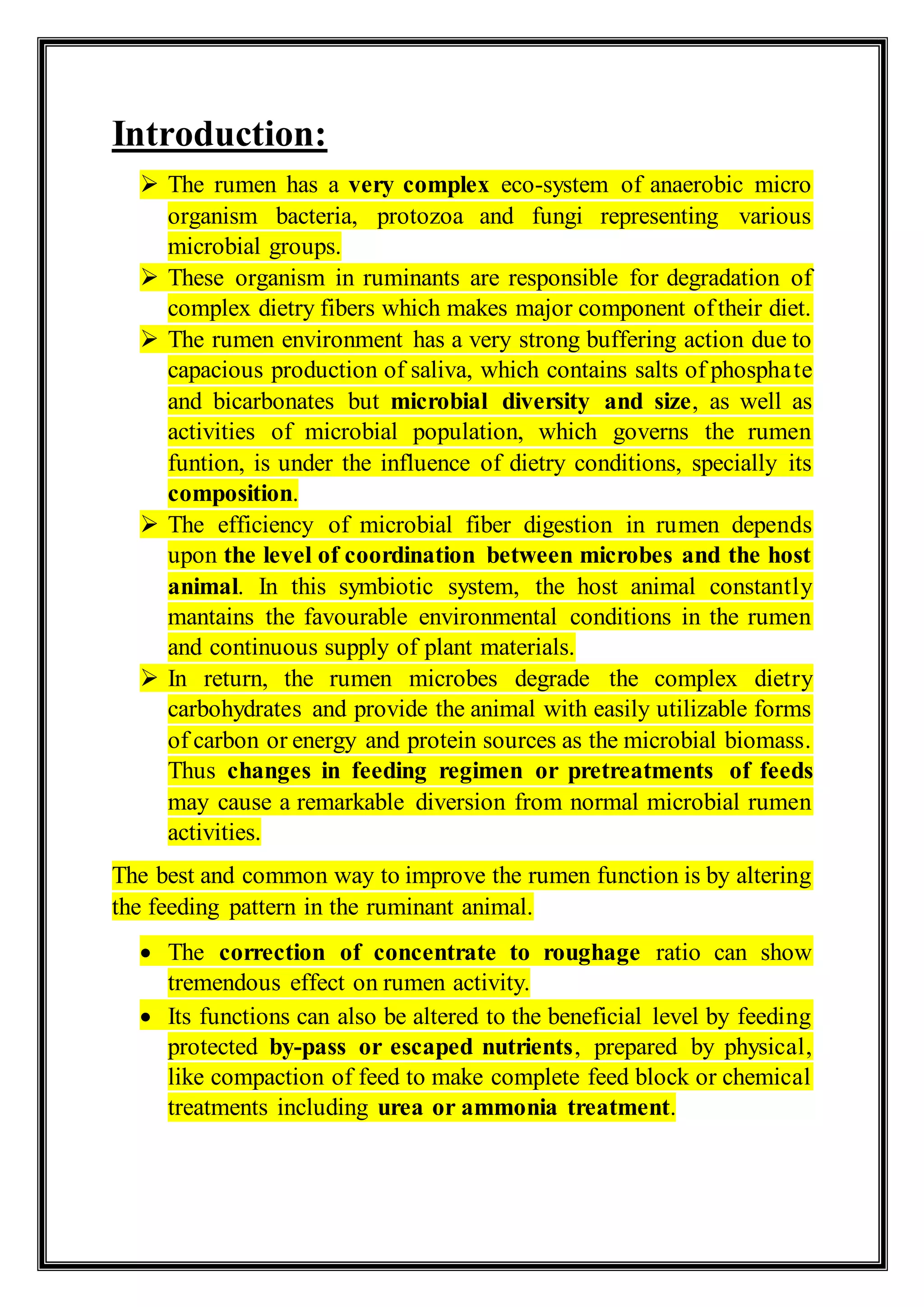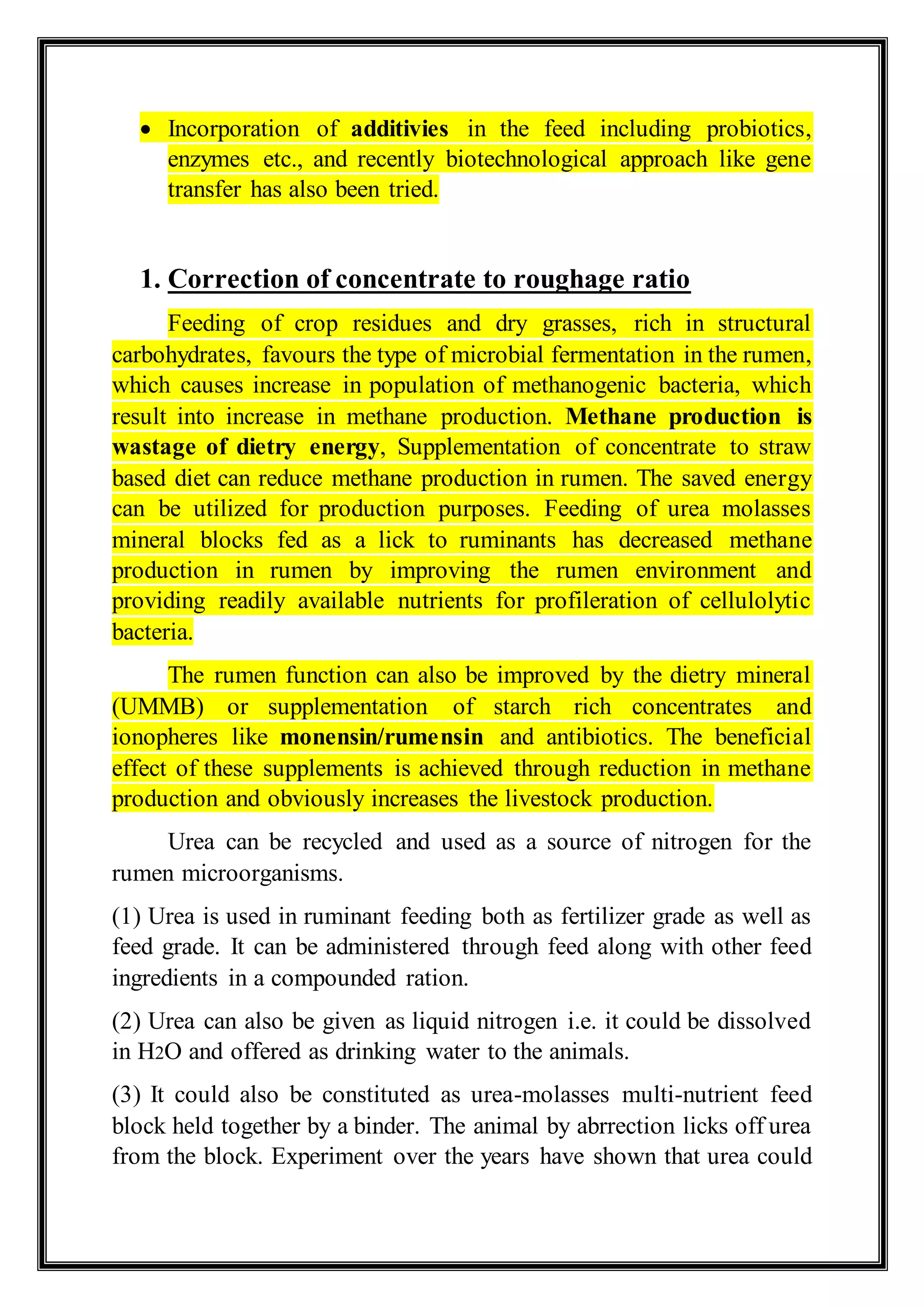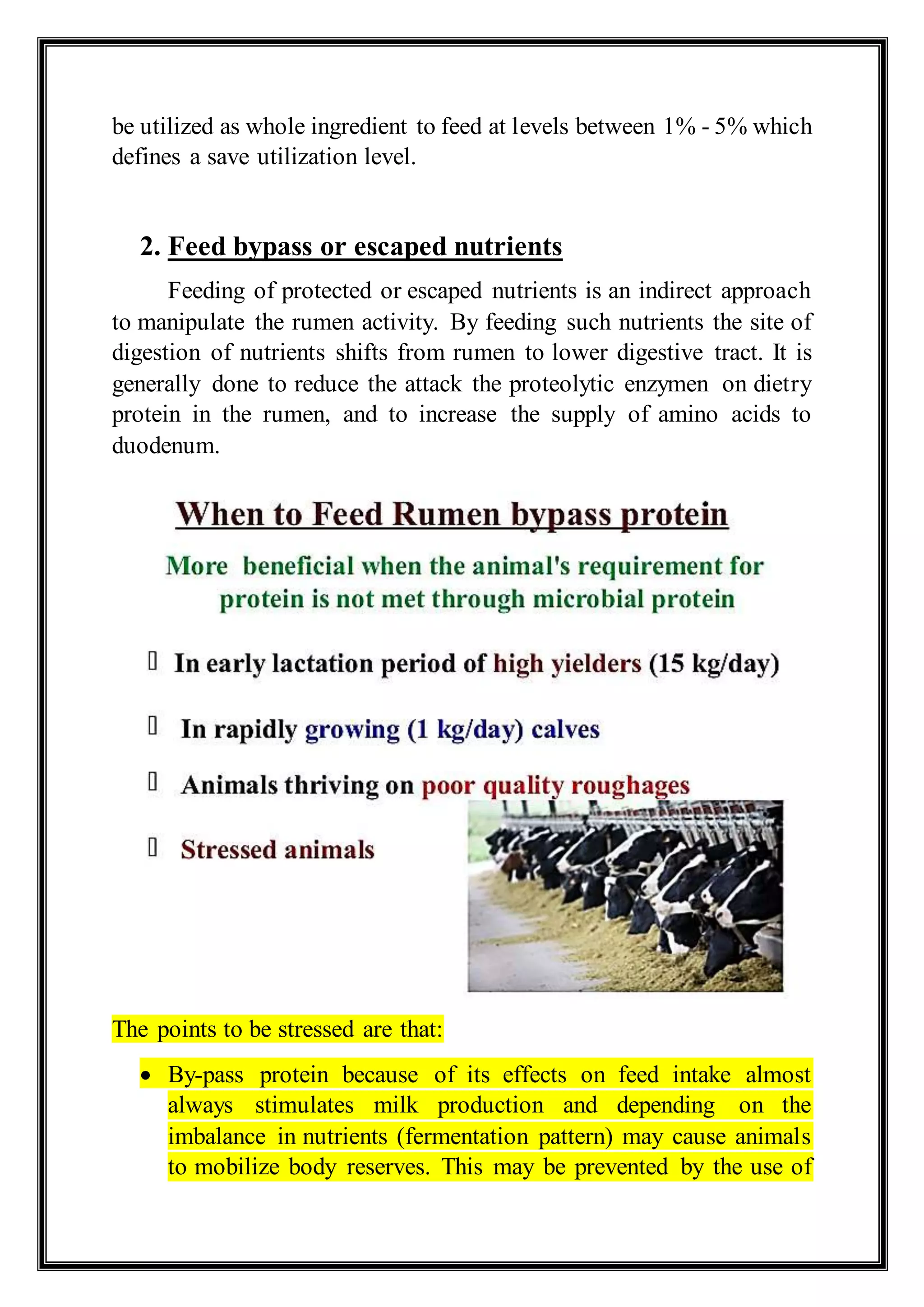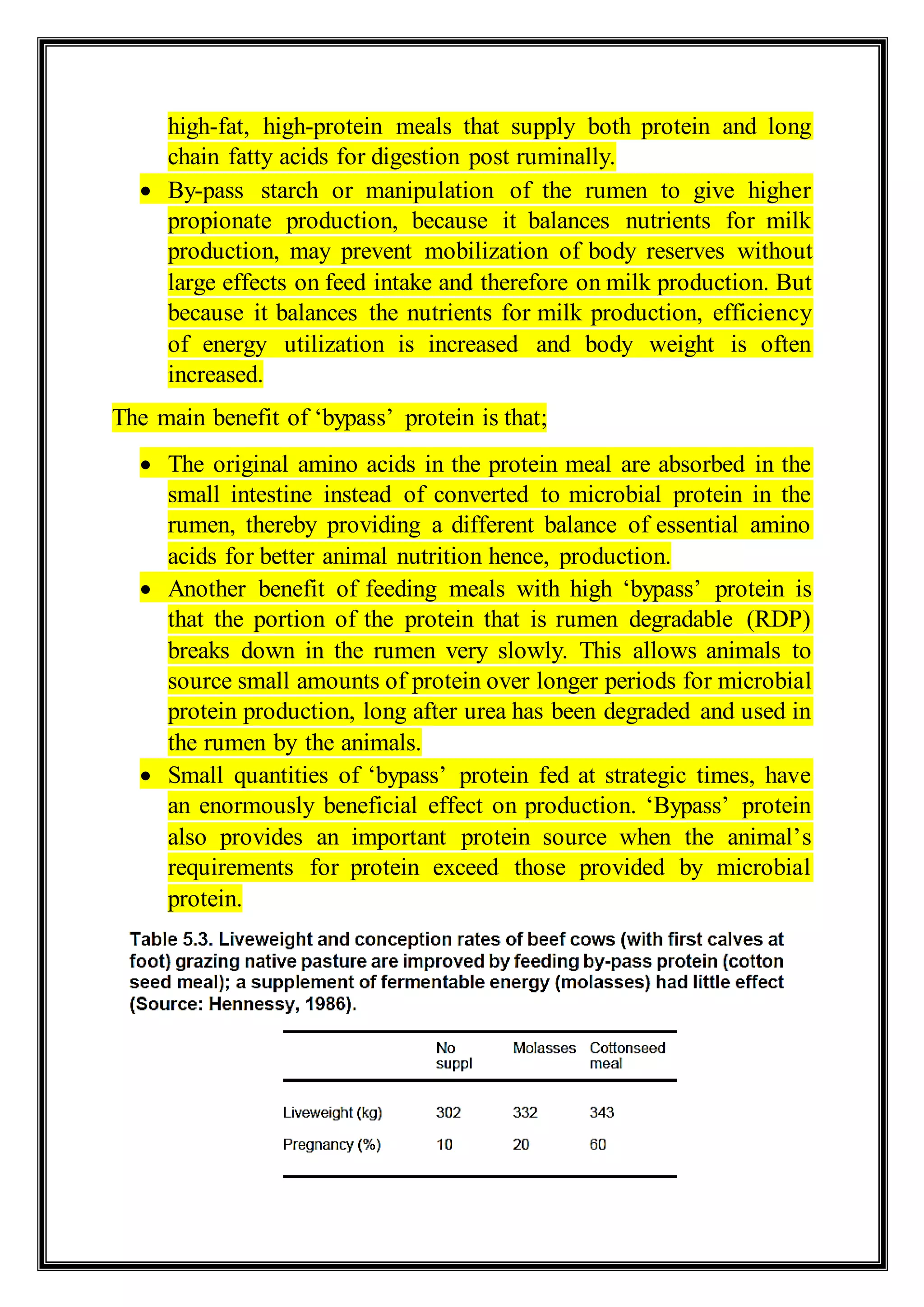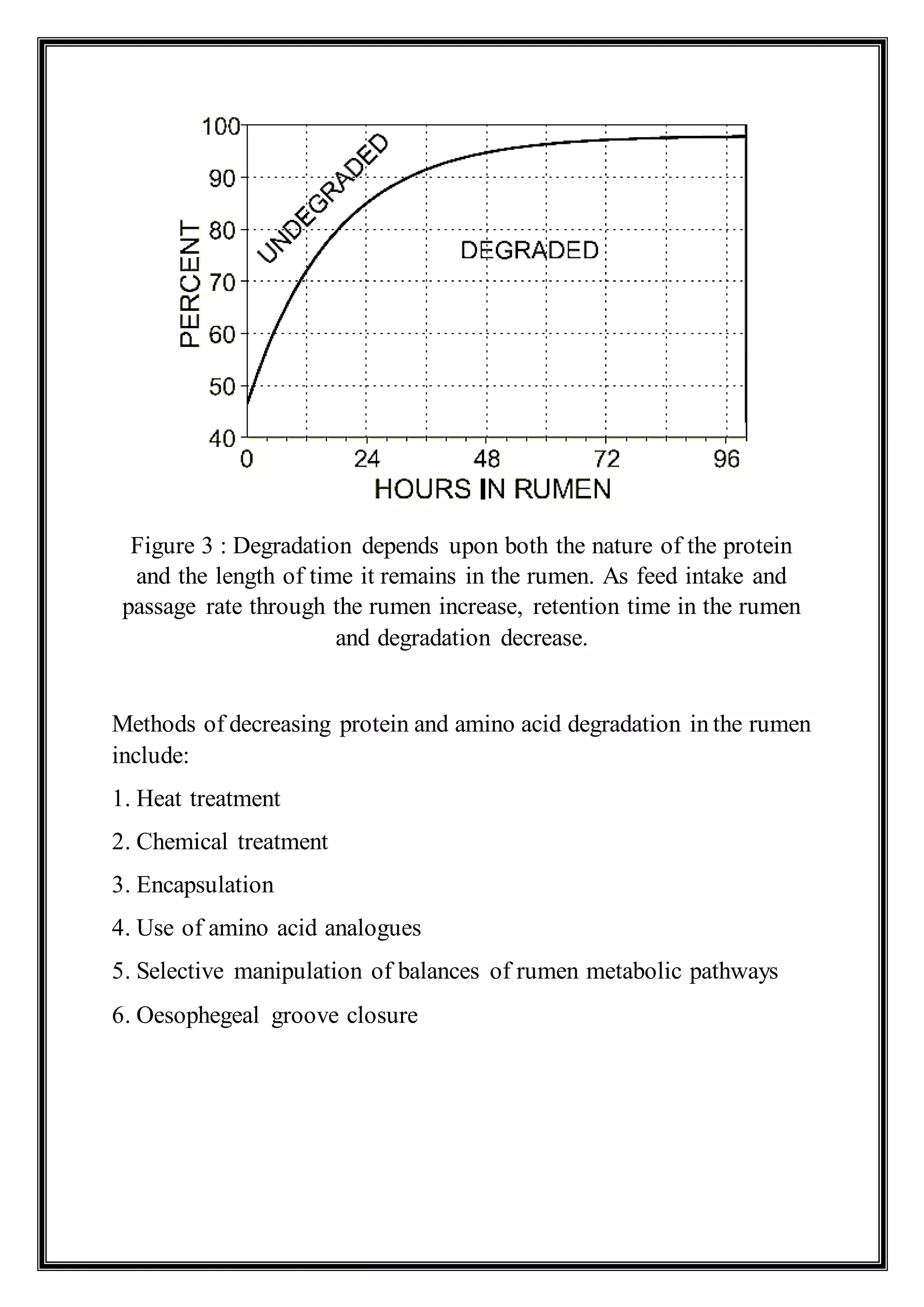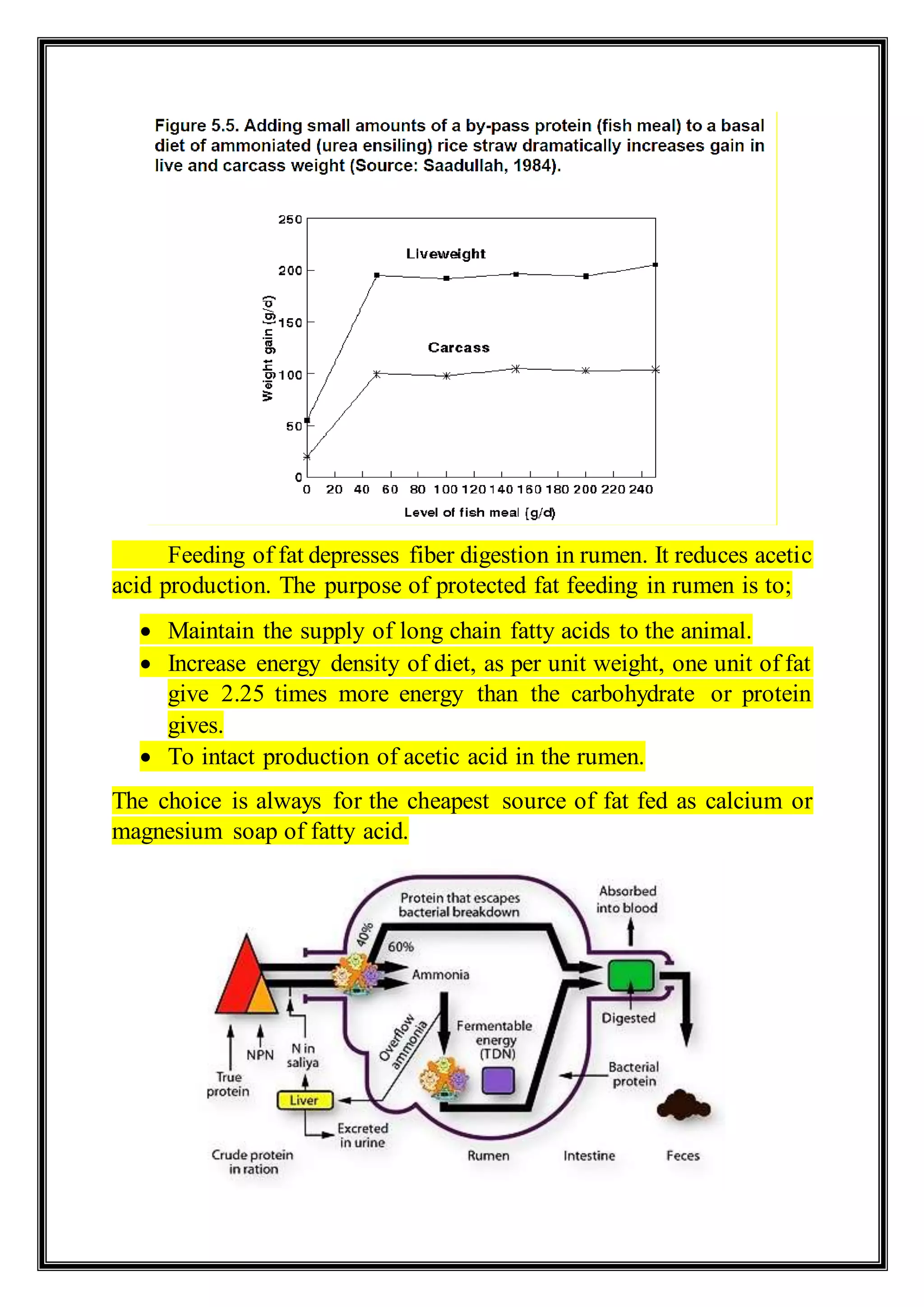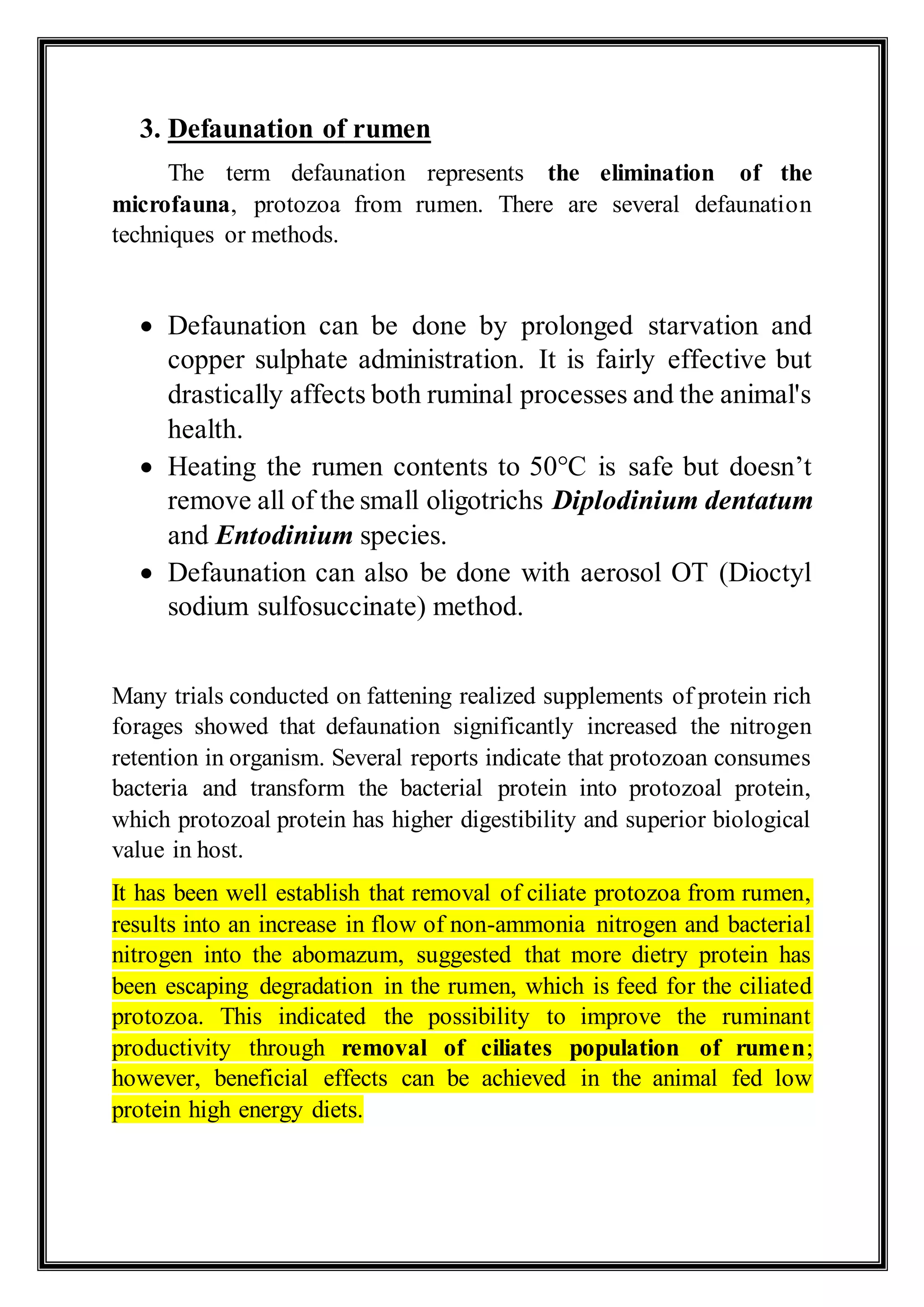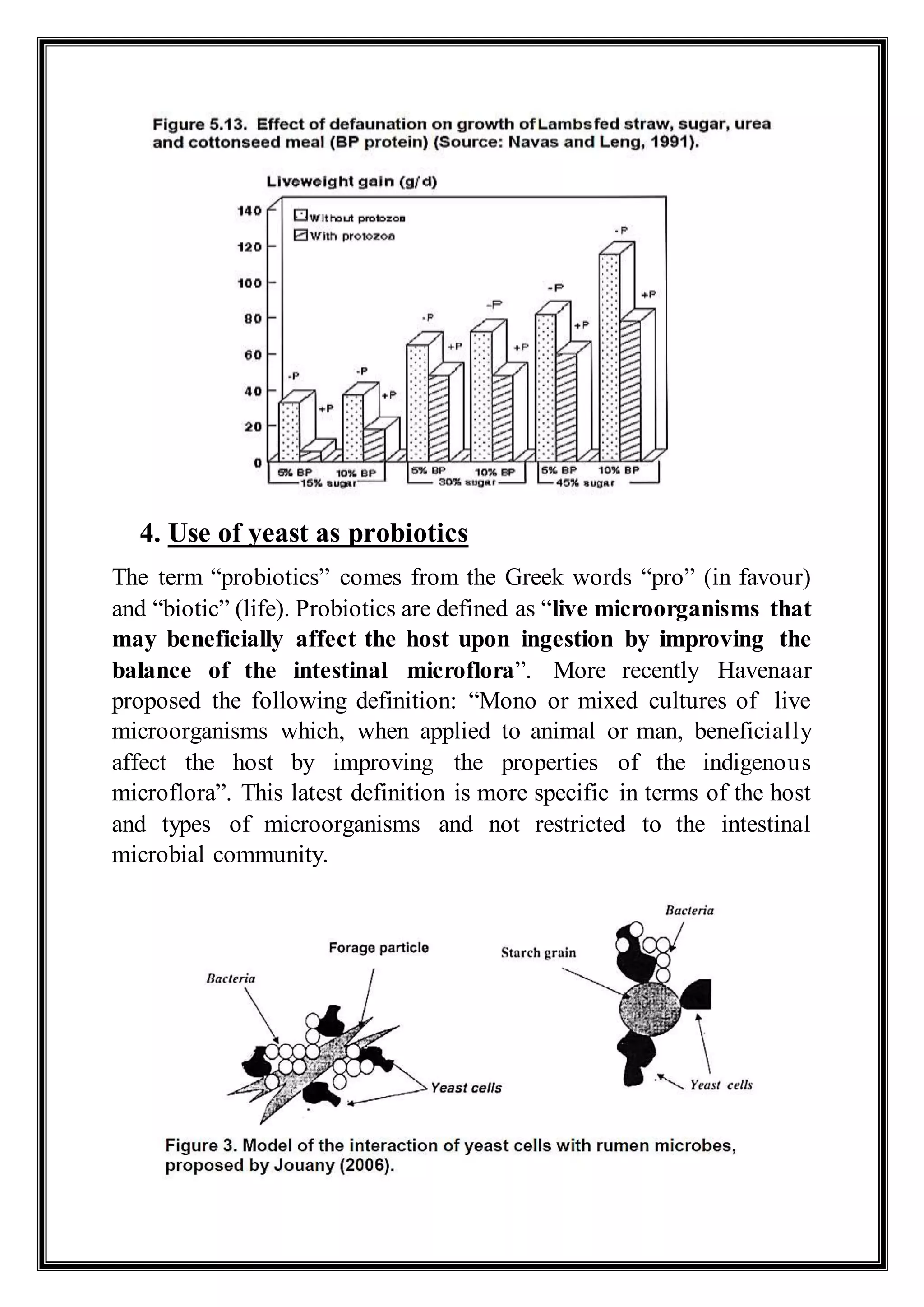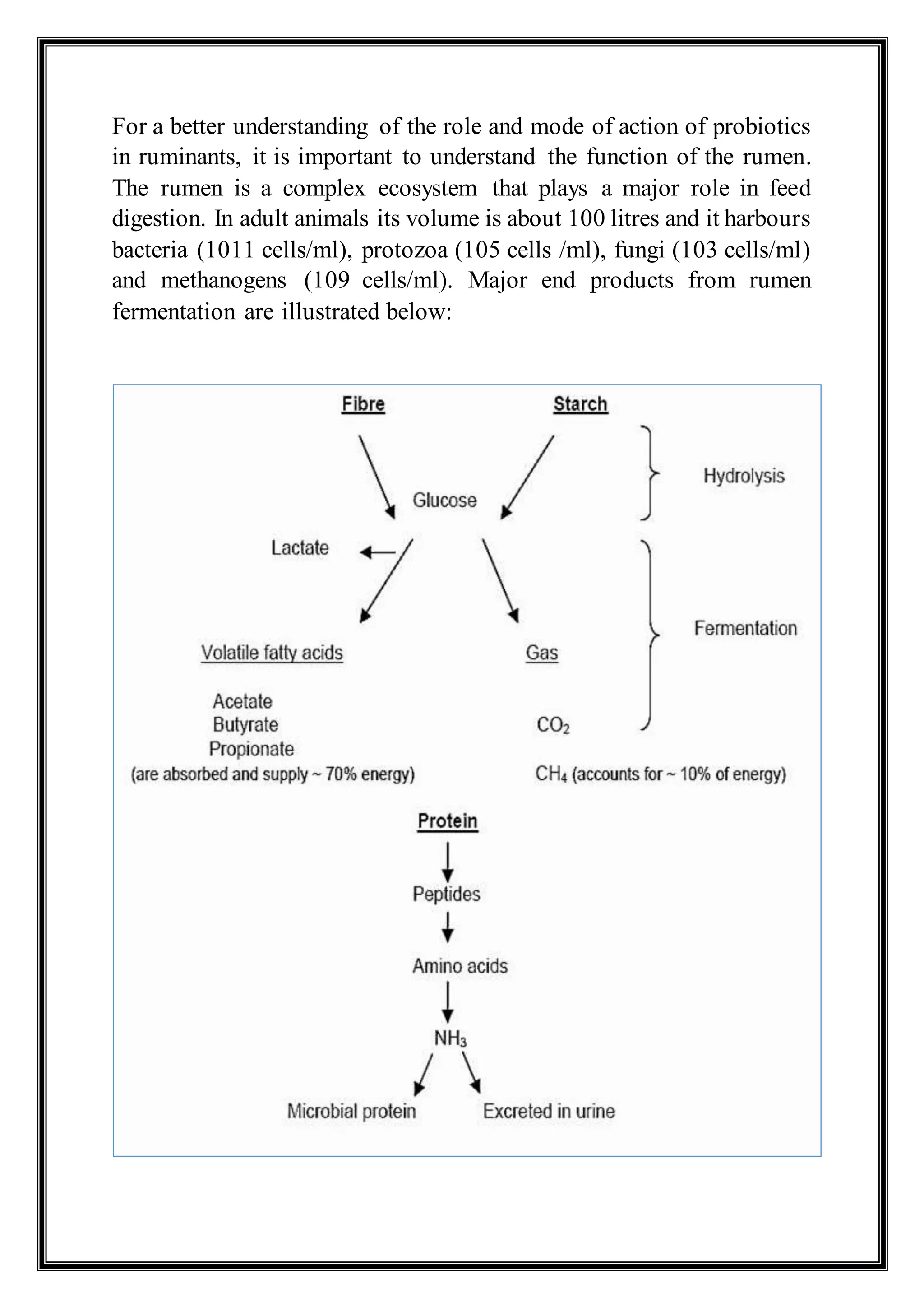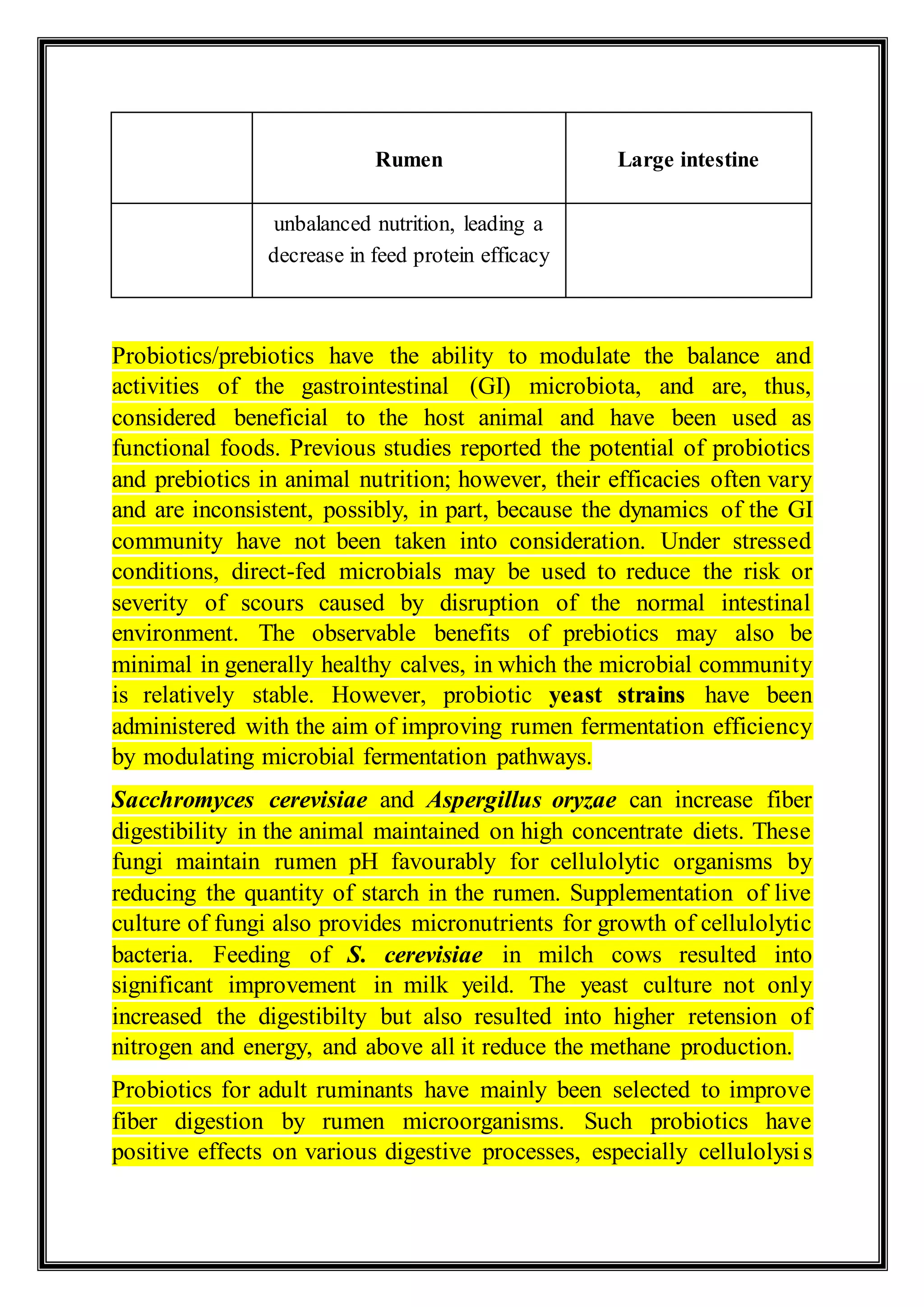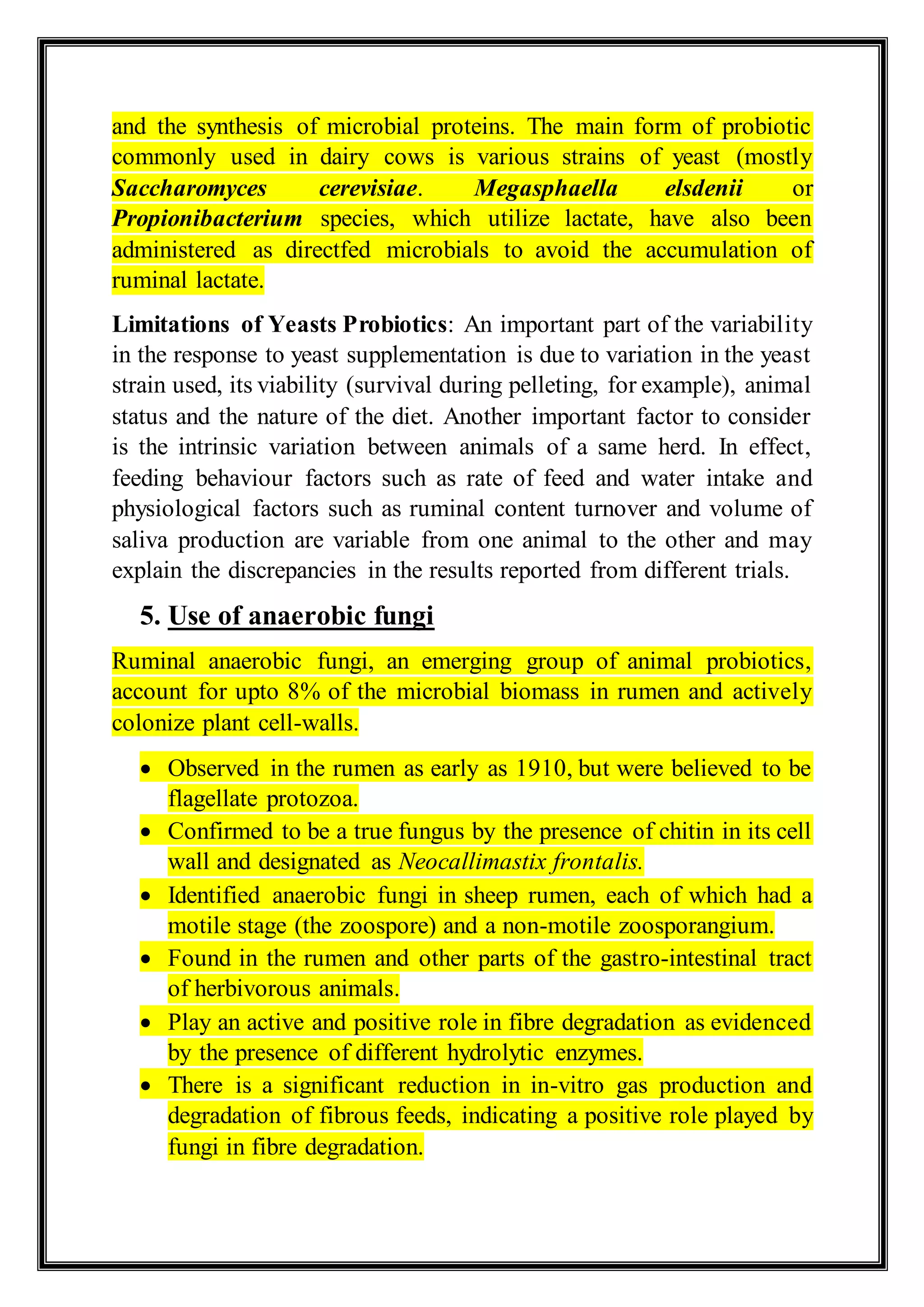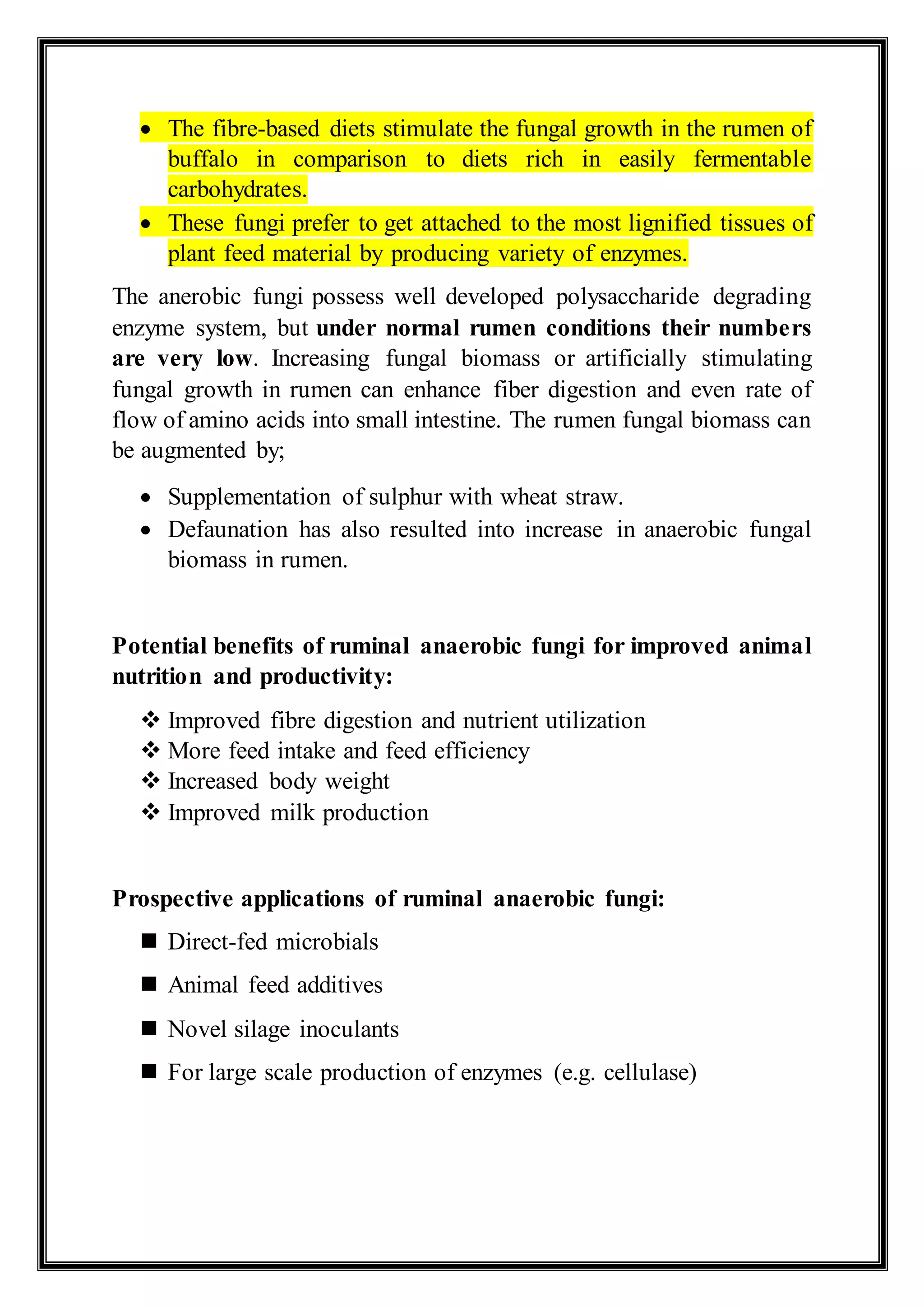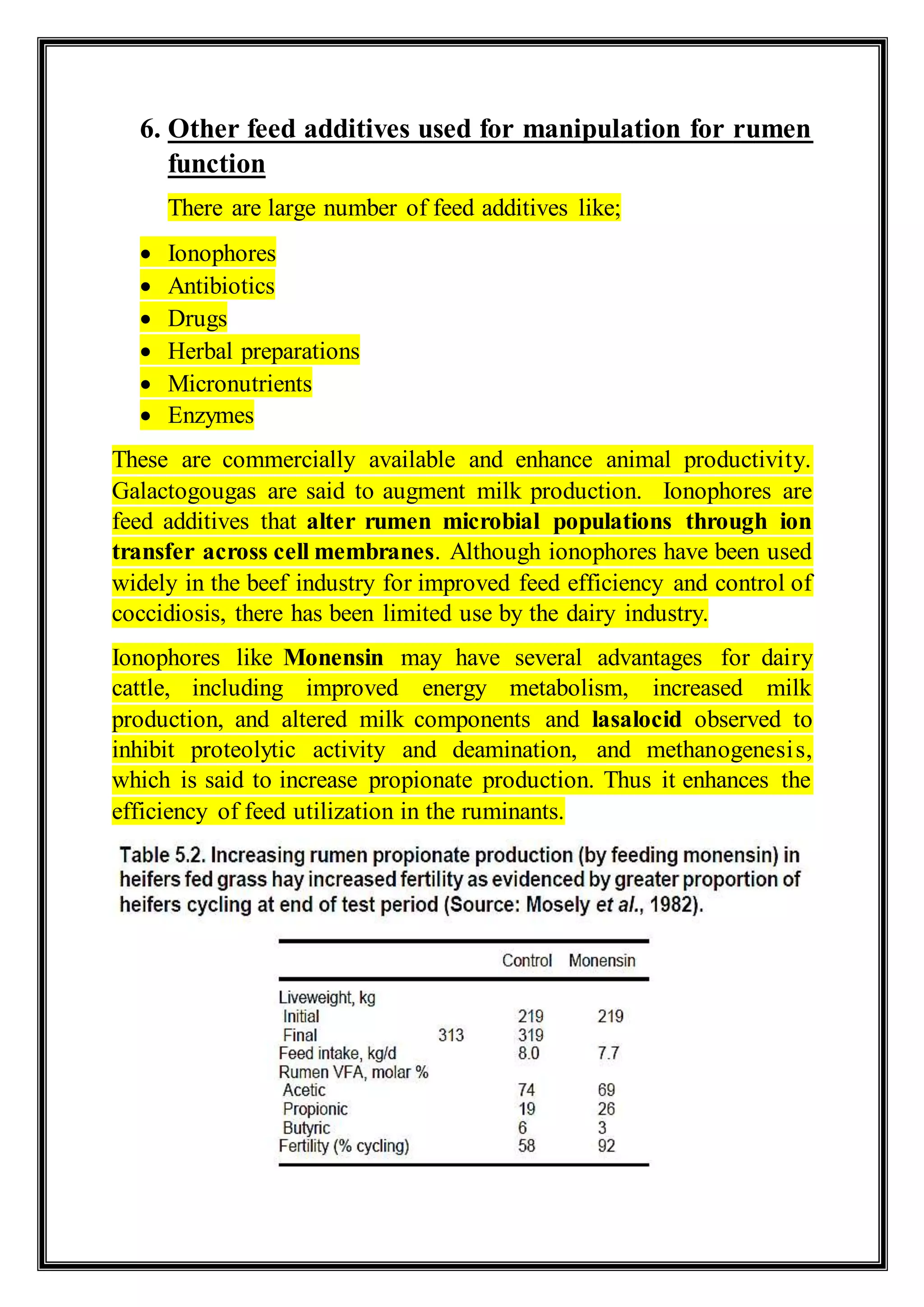The document discusses the complex ecosystem of the rumen, emphasizing the role of various microorganisms in fiber digestion and their interactions with the host animal, which are significantly affected by diet. It outlines manipulation strategies for improving rumen function and livestock productivity, including adjustments to the concentrate-to-roughage ratio, feeding bypass or escaped nutrients, defaunation, and the use of probiotics and anaerobic fungi. Additionally, it highlights the potential benefits associated with dietary supplements and additives that enhance microbial activity and overall nutrient utilization in ruminants.
